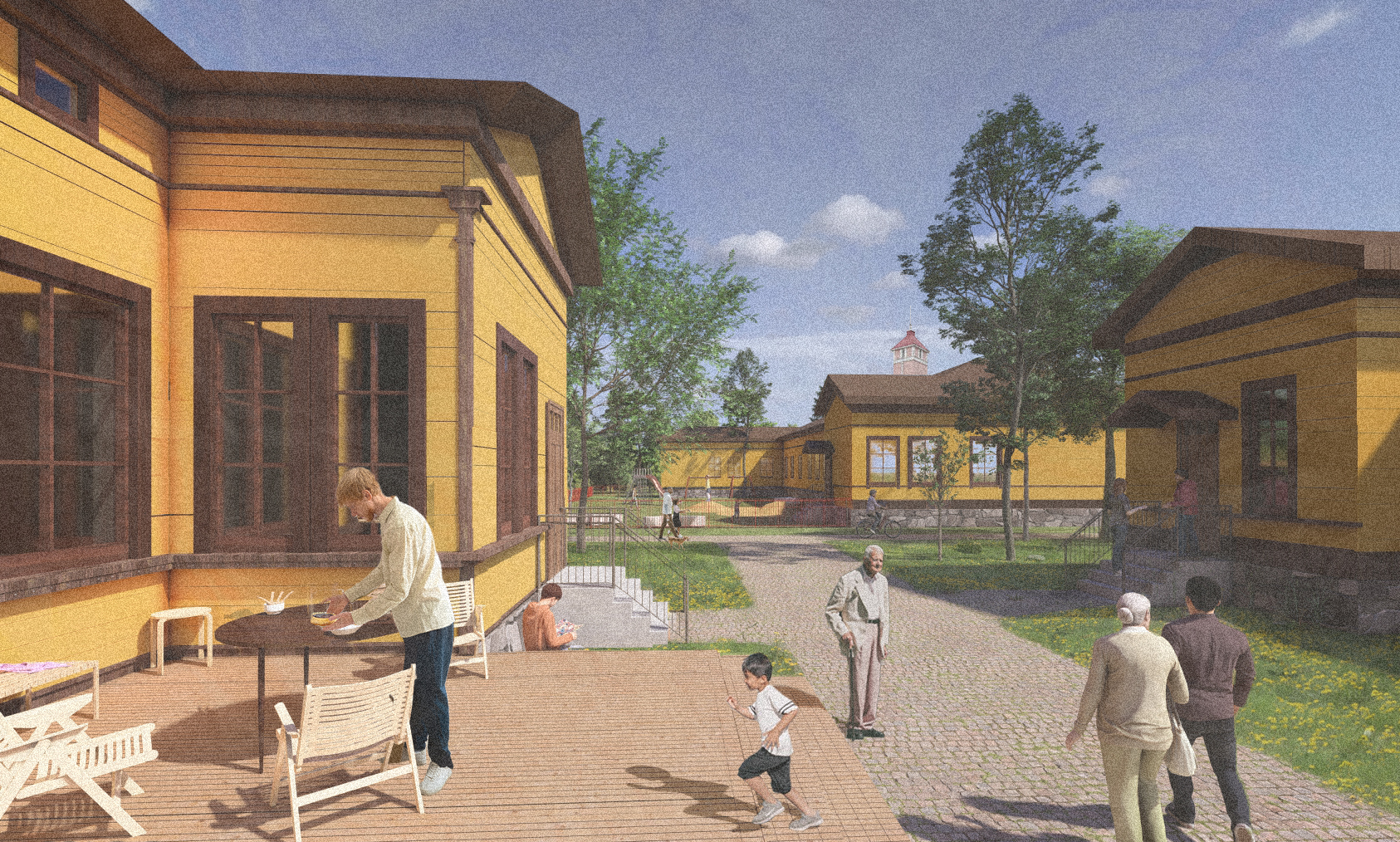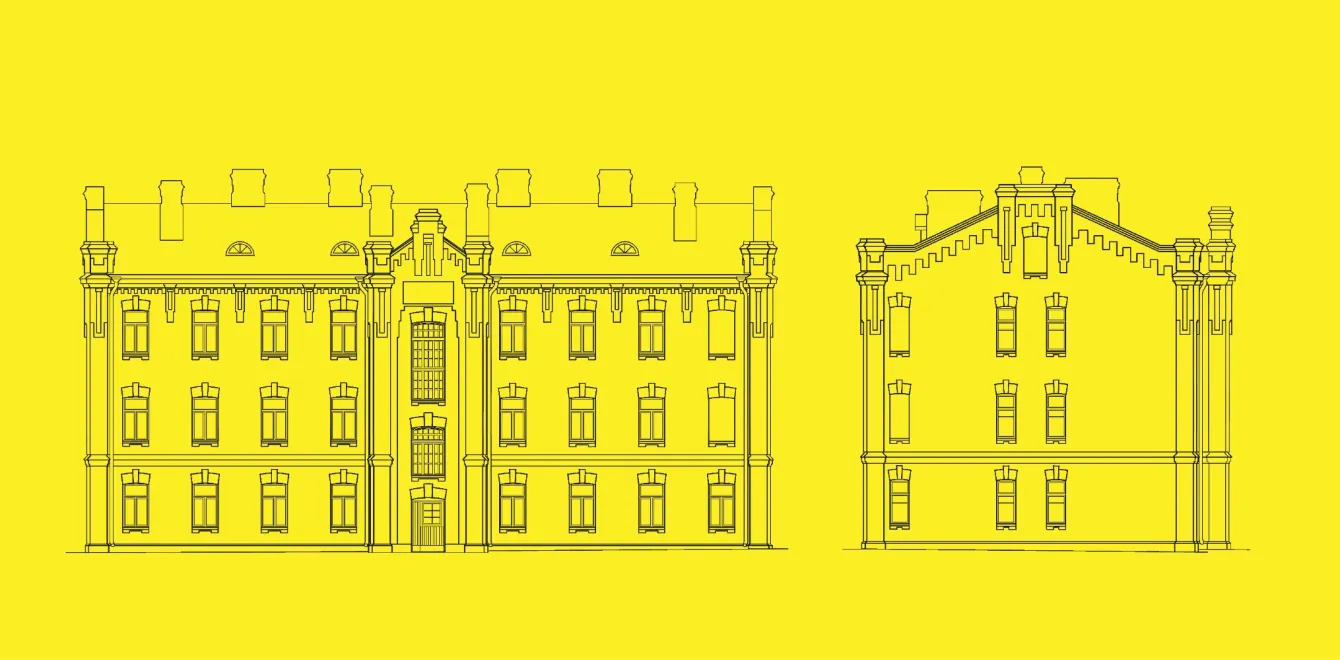Community living as a resource: introducing NEB Design Challenge winners Veera and Annika Annala

Loneliness has become a significant societal issue, and architecture, housing and urban planning have a major role to play in solving it. The NEB Design Challenge winners' work highlights community housing as a social and ecological resource.
In the spring of 2024, the Nordic Carbon Neutral Bauhaus project, which adapts the New European Bauhaus initiative to sustainable construction in the Nordic countries, organised a student competition seeking creative solutions for the innovative use of existing building stock.
Four sites from four Nordic cities were selected for the competition. The participating cities were Umeå in Sweden, Stavanger in Norway, Høje-Taastrup in Denmark, and Kuopio in Finland.
The Kuopio design competition was won by Veera Annala and Annika Annala. Veera Annala is studying architecture at Aalto University, while Annika Annala studies architecture at Tampere University. Their winning project, Resilience of Togetherness, explores the possibilities of community living in a culturally and historically valuable environment.
New life for the neighbourhood
In Kuopio, the project focused on the Kasarmipuisto area. The old military barracks area in the city centre is a nationally significant built heritage site (RKY 2009). The oldest buildings in the area around the current Kasarmipuisto barracks area date back to the end of the 19th century. In the early 20th century, the wooden houses in the barracks area were supplemented by new red brick buildings. The area was designed by August Boman and L.I. Lindqvist of the General Directorate for Public Buildings, among others.
The City of Kuopio is currently looking for a new use for the buildings. The preservation and renovation of the buildings is justified not only by their cultural and historical significance, but also by climate objectives.
The task of the NEB Design Challenge was to develop the old barrack buildings for reuse, taking into account different aspects of sustainability.
Master's level architecture students Veera Annala and Annika Annala have participated in student competitions together before, and they feel that collaboration is a natural starting point for design. They were not familiar with the NEB initiative, but the focus on sustainability, inclusion and aesthetics in the era of climate crisis felt like their own, and they had worked on the themes before.
In the Annalas' proposal, the new life of the buildings begins with rethinking the social aspect of housing. Their design focuses on transforming the barrack buildings into community living spaces for various target groups: single parents, students, and intergenerational families.
The design was also guided by the idea of making as few changes as possible to the culturally and historically valuable buildings, ensuring that, for example, the facades remain unchanged. Additionally, the importance of the spacious, park-like area between the courtyards is emphasized in community-oriented living: space allocated for cars is minimized, while opportunities for various activities are maximized.

Community housing before, today and in the future
The Kuopio design area was not familiar to Veera and Annika Annala beforehand, but it combined many of their intersecting interests: rethinking housing, interventions in architectural heritage, and approaching architecture from a broader scale than just individual buildings.
Like many others, Veera and Annika Annala began to reflect on housing issues, particularly in light of the restrictions brought on by the COVID-19 pandemic. The time spent in isolation led them to consider whether community living could offer practical help in organizing daily life and improving quality of life.
While the pandemic made many long for more communal living, the trend in housing production has been towards ever-smaller living spaces, such as studios and micro-apartments. As an interesting exception and a source of inspiration for their work, the Annalas mention the group rental apartments developed by A-Kruunu and designed by architectural firm Talli, which have been built in Helsinki, including in Kruunuvuorenranta.
Housing is also influenced by many cultural assumptions and models that are sometimes outdated. Larger apartments are still often designed with the nuclear family model in mind, despite evolving perceptions of family structures. Community living is frequently viewed as a somewhat vague transitional phase associated with youth or student life, even though, with an aging population, it holds significant potential for more collective and communal senior living arrangements.
According to Veera and Annika Annala, it was fascinating how easily new housing typologies could be adapted to the old barrack buildings. On the other hand, the original use of these buildings also represented a form of communal living, so preserving the architectural heritage and finding new ways to use it creates an intriguing continuum.

Strengthening the involvement of housing in the NEB initiative
Veera and Annika Annala are delighted that both the preservation of the existing building stock and addressing housing issues were rewarded in the competition, and that no more gestures than sensitive and minimal intervention were required to win it. They would like to see this attitude emphasised in the wider architectural debate.
The winning proposal, Resilience of togetherness, is also a good example of how architecture can be used to address major societal challenges. Through community living, social and ecological objectives come together. At the same time, the diversity of communal housing opens up new aesthetic priorities that challenge the prevailing, rather monotonous housing production.
In this sense, the proposal is an interesting extension of the NEB themes. At the same time, it raises the question of whether housing could be more prominently and broadly integrated within the NEB initiative.
Ursula von der Leyen, President of the European Commission and initiator of the NEB initiative, has proposed the appointment of a new housing commissioner. The primary role of this commissioner would be to address the significant housing crisis in Europe. Initiatives like the NEB play a crucial role in developing ecologically sustainable, affordable, and architecturally high-quality housing design and new housing typologies.
Read more about NEB Design Challenge here.
See Veera Annala's and Annika Annala's winning proposal here.


